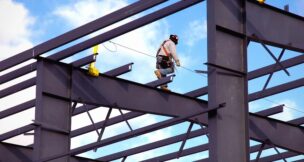Why it takes so long to build a home in this market


Why it takes so long to build a home in this market
Construction of custom-built homes are stretching out to a year, said Rob Lucas of Southeastern Family Homes.
The result, builders say, is a change in the way they market and sell new homes.
A group of homebuilders recently met in a roundtable discussion about issues facing the sector to understand how the industry is serving customers and suppliers.
In an effort to help local builders share ideas and best practices, Scott Byers, CEO of Majestic Kitchen + Bath, one of the largest fabricators of hard surfaces, cultured stone and glass in the Carolinas, gathered roughly a dozen industry executives in a conference room at Hall’s Chophouse in Nexton recently to discuss the industry today.

“With the volatility in the cost structure… wait until you’re 45 days from the house being complete to sell the house. It means that we have a lot more specs on our books than we previously had. We’ll put them on the market 30 days before we’re complete knowing we can sell them,” said Will Herring of Hunter Quinn Homes.
Homes built “on spec” are constructed before they are sold on the expectation that they will sell quickly once complete. Homes built that way cannot be customized and can end up costing builders interest on loans if they remain on the market any length of time.
The lack of customization has the added benefit to builders of easing supply issues. They can put in floors, cabinets, hardware, etc. that they have in stock, rather than the items requested by home buyers who have paid in advance, which might have jumped in price or require weeks to arrive.
The downside for buyers is that their options are limited.
Low interest rates have moderated the relative cost of home buying as they hover around the historically low three percent level. But local home builders fear signs on the horizon that suggest interest rates may soon tick up. As the price of borrowing money increases, prospective buyers will be looking for price reductions in homes, seek lower-cost houses or balk at the housing market altogether.
“It could lead to smaller homes,” said Jonathan Bailey of Homes by Dickerson. “In the last couple of years, it seems like square footages are getting larger and larger as people have had more buying power with the lower interest rates. Whether it would be the finishes or the size, there will be some compromises there.”
So many other factors are pressuring the cost of buying a new home that the impact of interest rates has diminished. “As prices have appreciated and we’ve priced to market to offset the rising house costs, unfortunately we’ve had to price some people out of it,” said Pulte’s Charlie Tipton.
An influx of residents from other parts of the country have pushed up demand for new homes; so too has demand for skilled tradespeople, creating price pressure and supply issues there as well.
“The same number of plumbers, electricians, framers and roofers are available, so it’s their opportunity to negotiate higher rates at this time in our market, and will continue to be as long as the demand is there,” said Adam Copehaven of CopeGrand Homes.
According to ManpowerGroup’s annual survey, 53% of skilled trades workers are over the age of 45, with more than 60% of electricians over that age. Electricians retire, on average, at age 58, and are not being replaced by younger workers, leading to a dramatic shortage in this critical homebuilding trade.
“There was a shift at some point where skilled trades became unfashionable. People didn’t want their children to go into skilled trades; they all had to go get liberal arts or accounting or professional degrees. There’s just not enough people coming up through the ranks to fill that skilled labor force,” said Southeastern Homes’ Rob Lucas.
As homebuilding is, in many respects, an iterative operation, where each step requires completion of a prerequisite step, an inability to find even a single trades person can stymie an entire operation. Explains Jim Blakeney of Mungo Homes, “You’ve got a guy who digs a hole, a guy who plants the tree and a guy who covers it up. So what happens when the guy that plants the tree misses a day of work?”
These issues cascade through the industry and reverberate across the nation. Michal Anderson of Cambria Quartz noted that many of the 34 people-a-day moving to the Charleston area have sold their homes quickly believing they could move into the residence under construction here, only to discover that the timeline for that house has been pushed months down the road. “And they have nowhere to live, and so they’re frustrated and irritated… It filters into everything we do,” she lamented.
“I would take the 2019 market all day long over the 2022 market, for the sole reason that it was predictable,” said CopeGrand’s Adam Copenhaver.
Adding to their misery in the Charleston area is the layout of the region and the regulatory environment. Because the Lowcountry is an archipelago, crisscrossed by bodies of water, land options for communities are limited. That has the effect of pulling the reigns back on the homebuilding industry.
“This market is not easy to develop lots in,” said Herring. “The cycle is getting progressively longer and more expensive. Time and capital make lots more expensive which eventually makes homes more expensive.”
Permitting and regulations further slow the process with wetlands regulations changing from one presidential administration to the next and staffing issues at municipalities causing backups in permitting requests. Where residential construction companies purchased land two years before building commenced in the past, that timeline is now stretched to three years or more.
These issues are pushing home builders to nurture and reinforce their relationships with suppliers and staff, the builders all agree. Team-building, recognition for good work, flexibility in schedules, remote work and servant leadership are all staples of the successful 21st century workplace that are as true in construction as they are in other industries.
It also requires an understanding of how employee groups differ from each other. “The motivators for people in the office are different from the motivators for people out there sweating on the jobsite,” observed Meghna Ramesh of Majestic Kitchen + Bath.














